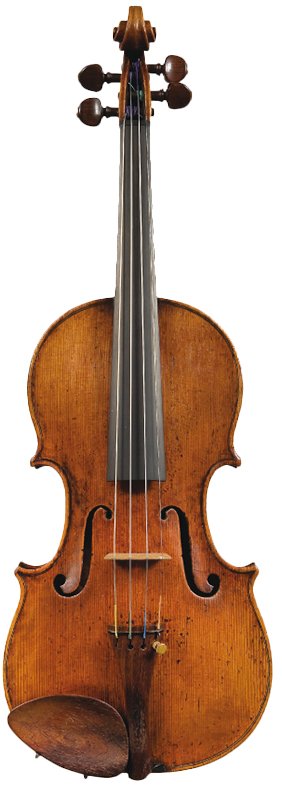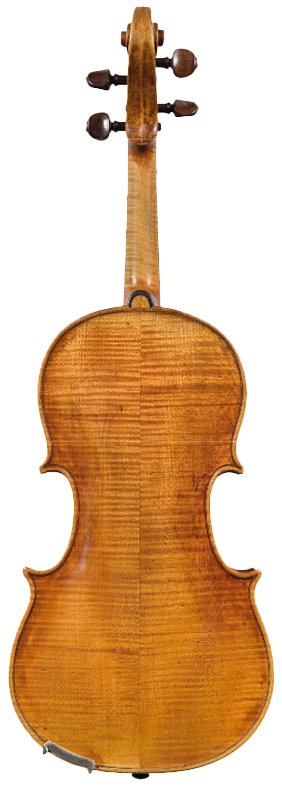Serafin is one of the great names of Venetian violin making, but in some ways the lesser-known Giorgio represents the spirit of the tradition better than his uncle Santo. Giorgio's work has that expressive and sometimes unpredictable freedom of style that I associate with Gofriller, Peter Guarneri, Tononi and Montagnana, rather than the uniquely- for Venice at least- disciplined and meticulous style that Santo Serafin practiced.
Giorgio was born in 1726, the son of Giobatta Serafin, who came to Venice with his brother Santo from their native town of Udine in about 1721. There is no record of Santo having children of his own, and Giorgio almost certainly learned his trade in his uncle's workshop in the Calle dei Stagneri. This establishment seems to have closed in 1745, and the young Giorgio continued his apprenticeship with Domenico Montagnana in the neighbouring shop under the sign of 'Cremona'. When Montagnana died in 1750, Giorgio entered into a very practical relationship with his daughter Antonia, which entailed their marriage and equal shares in the business of the workshop between them and Antonia's sisters Virginia and Annetta. The workshop provided good business for Serafin. He became official curator of the orchestras of the various 'ospedale' in Venice, engaged with repairs of all sorts of stringed instruments and bows as well as the supply of various necessities including the essential strings. Perhaps this kept him from violin making, since his known output is relatively small. Yet what he produced is a fascinating synthesis of Santo Serafin and Domenico, stylistically almost diametrically opposed, yet the two outstanding makers of Venice.


His heads, for example, sometimes show a particular Montagnana form, with open windings, a small chamfer and an extended last turn. Often the front face is flattened near the throat, like early Amati scrolls. Long, elegant corners come from his uncle Santo, but the winding, slightly bottom-heavy soundholes seem to be his own. But all these aspects change from instrument to instrument, and undoubtedly Serafin had assistants working in his busy atelier, just as the other makers of the city. He seems to have preferred a high, almost Brescian type of full arch, but flatter, more conventional forms are encountered. For varnish he used both a slightly dull orange brown, and a spectacular Montagnana-like clotted red. The purfling is very reminiscent of Santo's, however, generally with a prominent poplar white core and very slender pearwood black borders. The mitres seldom meet properly, and like his uncle's, reveal a sharp black line where the strips join in the corner. Giorgio's corners themselves are conventionally thicker than the rest of the edge, unlike Santo, who habitually seems to have shaved the corners thin, as did Guadagnini. Inside, the blocks and linings are of pine, and morticed with a Germanic-looking tapered scarf joint. Identification is generally made easy by his usual habit, in this case certainly inherited from his uncle, of branding his name in capitals clearly on the lower rib, 'Giorgio' above and 'Serafin' below the endpin.
Giorgio's assistants included Anselmo Bellosio, Giuseppe Bodio, and his son Giovanni Batista Serafin, who took over the shop when Giorgio died in 1775, aged only 49. His uncle Santo, by then living in retirement, died in the following year. Worse was to come; in 1777 Giovanni Batista died aged only 19, and the shop was sold to Anselmo Bellosio. Bellosio provided Venice with its last hurrah in violin making- his work kept alive the best traditions of violin making in its most famous workshop, the sign of 'Cremona' in the calle dei Stagneri, well into the following century, thanks to his direct connection through Giorgio Serafin with the founders of the classical era of Venetian violin making, Santo, Montagnana and Gofriller